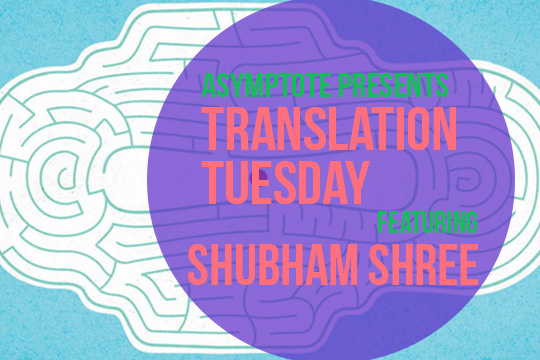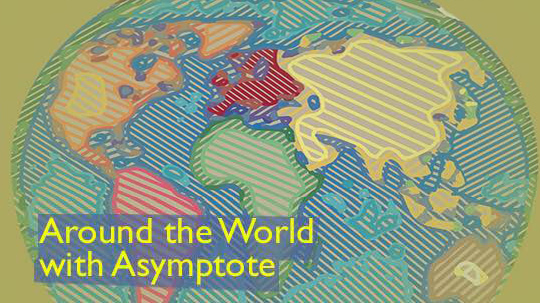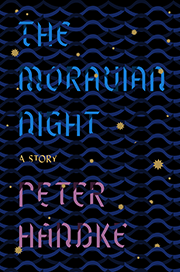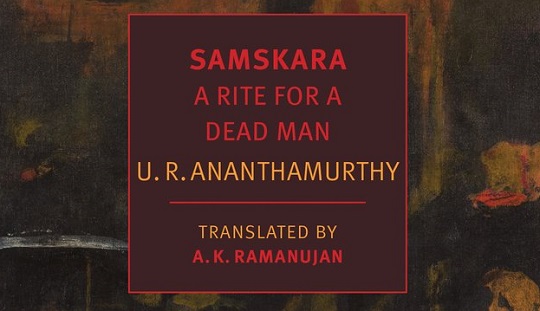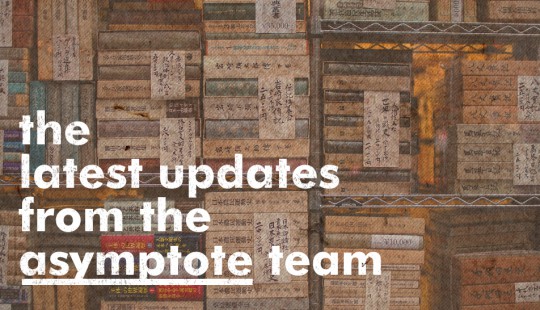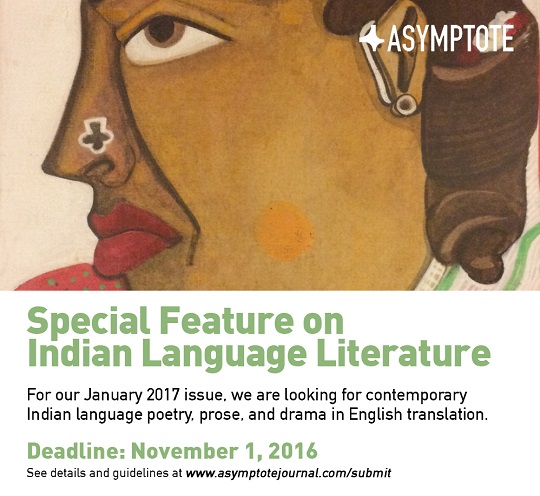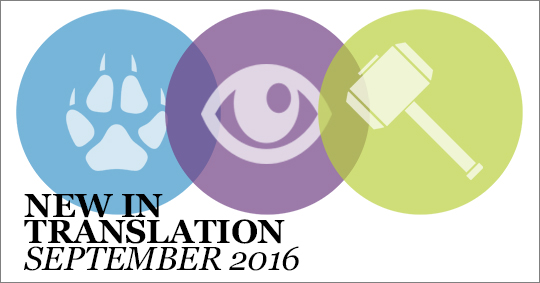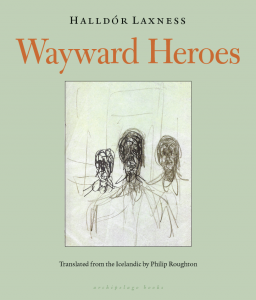Our Winter 2017 issue, hot off the presses yesterday, celebrated our six years of publishing world literature with new work from 27 countries by authors such as Colm Tóibín, Cesare Pavese and Monika Rinck, alongside a Special Feature on Indian poetry focusing on marginalized voices. Here, via acclaimed translator Daisy Rockwell, we present two works from this Special Feature by 2016 Bharat Bhushan Agrawal Prize winner Shubham Shree—who recently caused great controversy with her bold use of slang and English words, considered a desecration of the tradition of Hindi poetry.
My Boyfriend
(An essay proposed for the Grade Six Moral Education Curriculum)
My boyfriend is a two-legged boy human
He has two hands, two feet, and one tail
(Note—I’m the only one who can see his tail)
My boyfriend’s name is Honey
At home, he’s Babloo, on his notebooks, Umashankar
His name is also Baby, Sweetie-pie, and Darling
I call my boyfriend Babu
Babu also calls me Babu
Babu has dandruff in his hair
Babu crunches when he eats
Babu slurps when he drinks
When he’s annoyed he packs a 440 volt punch
He has vaccine scars on his arms, twin half-lemons
If you poke them he screams
My Babu also cries
in a hiccupy sort of way
And he laughs with his eyes closed
He loooves salty food
When he sleeps, he snores from his nose and mouth
I am a good girlfriend
I swat away the flies trying to sneak into his mouth
I even smacked a mosquito on his belly
I always start laughing when I see him
He has very nice cheeks
If you stretch them out they get five centimeters bigger
He gave me a teddy bear named Kitty
We are the world’s best couple
Our anniversary is the 15th of May
Please congratulate us
*What we learn from my boyfriend
Is that you should smack mosquitos on your boyfriend’s belly
And swat flies away from his mouth
READ MORE…

